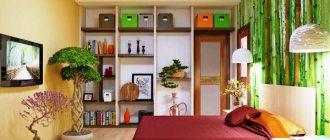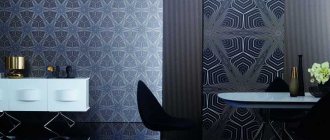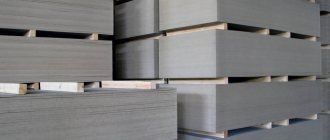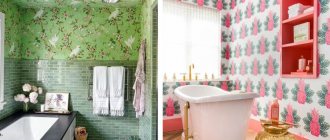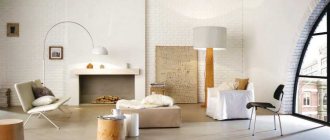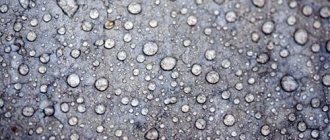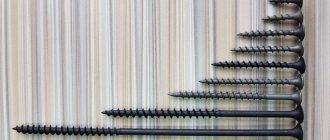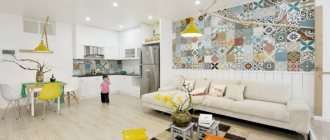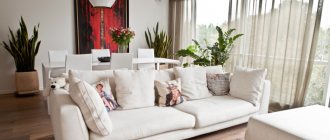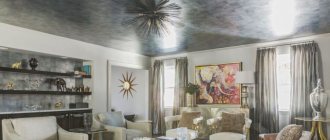Do you want practical and at the same time environmentally friendly wallpaper? Then choose bamboo wallpaper, the manufacturing technology, advantages and disadvantages, as well as the characteristics of which are described in this article.
In the modern world, where people are surrounded on all sides by a wide variety of examples of advanced technical thought, renovations with an emphasis on ecology, which is called “eco-repairs,” are becoming more and more popular.
Designers for the most part do not turn to paper wallpapers that have already become traditional, but to cork or bamboo wallpapers.
The latter will be discussed in this article. The manufacturing technology of beech wallpaper is very original and specific: they are made from natural materials, namely from a fabric base and bamboo slats on which the fabric is actually attached. The width of the slats ranges from five to twenty-five millimeters. The standard width of wallpaper is usually from one to two meters, and they are glued horizontally. However, finding wider rolls (from two to two and a half meters) in construction stores also seems to be a completely feasible task. You can stick such rolls the way you want - either vertically or horizontally.
Characteristics of bamboo wallpaper
Wallpaper is made exclusively from a special type of plant called bamboo. Moreover, in production, the top layer of the cut is used, and no other. The first stage is a good long drying, and then storing the bamboo trunks in a special room with the proper temperature level, which remains unchanged throughout the entire storage period. At the second stage, the upper cut of the trunk is split and jointly removed, after which the cut is glued onto a fabric base.
What is curious is that such characteristics of wallpaper as texture and color depend mainly on the time of collection, as well as on the technologies with which the material is processed and on its type. Black and generally dark colors are obtained through heat treatment of slats, but light colors are a product of processing natural colors.
The palette of shades of beech wallpaper is quite diverse. They come in brown (golden brown, dark copper and even red), light, green (ranging from soft greenish to brownish green), yellow (peach and creamy beige shades).
Bamboo wallpaper - a mysterious force of nature
The process of making bamboo wallpaper includes several technological aspects. First, carefully selected bamboo fibers are crushed and dried. And then, the bamboo “blanks”, the so-called slats, are attached to special rice paper or ordinary fabric fittings according to a predetermined pattern. Moreover, chemicals are completely excluded from the technological process. Even the glue used to fix the slats is natural.
Many attribute to bamboo not only healthy energy, but also some special, almost magical properties. In Eastern culture, it is believed that bamboo drives away evil spirits from the house and cleanses a person’s aura, filling his home with positively charged energy, as well as attracting health, prosperity and family well-being. There is a belief that bamboo can fulfill any desire of a person.
Therefore, wallpaper containing bamboo particles is not only a unique material for a healthy interior, but also an energetically powerful positive element of the home.
The fact that bamboo fibers are completely devoid of any “chemistry” becomes clear when you get acquainted with the growth characteristics of the plant. There is no point in feeding bamboo with fertilizers; the plant already, without any stimulants, grows a meter in height every day. Due to their high degree of environmental friendliness, bamboo wallpaper is included in the category of healthy finishing materials. We also recommend reading: photo wallpapers in the interior.
Color in natural tones
Most often, when making bamboo wallpaper, they try to preserve its naturalness in terms of color options. It is not for nothing that only those varieties of bamboo are chosen for the production of wallpaper that do not lose the brightness of their natural colors after drying. This allows you to avoid applying a layer of artificial paint at the final technological stage.
Therefore, the color palette of bamboo wallpaper is based on natural shades. The nuances of tones depend on factors such as the growing conditions of bamboo and its varietal.
The most common shades are the following:
- light yellow;
- natural white is the most valuable option for bamboo wallpaper;
- dark brown and light brown;
- pale green;
- rich green;
- dark olive;
- copper.
In order for the natural palette to retain its freshness for as long as possible, bamboo wallpaper is coated with an antistatic agent with a dust-repellent effect.
Bamboo wallpaper: features
Modern interior design tends to use natural materials. For the popular trends of eco-design, Provence, country, minimalism, and Japanese style, natural wall coverings made from bamboo wallpaper are ideal. The variety of natural colors and textures, environmental friendliness and aesthetic appearance ensure high demand for natural wallpaper.
Advantages and disadvantages
Natural wall wallpaper will decorate the interior and highlight the design of a room of any style, focusing on environmentally friendly design. Bamboo wallpaper has undoubted advantages:
- Environmentally friendly material - bamboo wallpaper is made from natural materials and does not cause allergies.
- Beautiful natural texture - for one batch of wallpaper, bamboo stems are selected from the same variety, manufacturers carefully select bamboo slats of the appropriate texture and shade.
- Wide color palette - the color of bamboo slats depends on the location of the plant, the time of collection, and the initial drying temperature, so the color palette of wall coverings can range from soft white to rich brown shades.
- Easy to clean and antistatic – the coating does not attract or absorb dust. Sometimes manufacturers coat the slats with antistatic impregnation, which makes cleaning the coating easier.
- Long service life - high-quality wallpaper, if the fastening technology is followed, will last up to 10 years, since the material is not subject to fading when exposed to sunlight and has anti-vandal properties.
- Hide wall unevenness - due to its dense structure and thickness, wallpaper can hide minor defects and unevenness, and therefore does not require perfect alignment of the walls.
- Glue to various surfaces - can be glued to wood, putty, plastic, cement and other surfaces using only a primer and the required type of glue or liquid nails.
The disadvantages of bamboo wallpaper include the following aspects:
- High price - natural materials undergo a number of labor-intensive and energy-consuming stages of drying and preparation for use, which determines their high cost.
- Difficulty when attaching to the wall - wallpapering must be done in stages, following the manufacturer's recommendations. It is better to entrust such painstaking work to a professional.
- It’s a boring look to completely cover a room with one type of covering - designers do not recommend covering walls with one type of wallpaper. It is better to use bamboo as panels in a room or to create decorative panels, combining them with cork or other types of wallpaper.
- Surface irregularities – on the surface of bamboo slats, there may be bulges and compactions in the structure. Such defects are not considered defective, but can complicate the process of joining seams and gluing.
When choosing bamboo wallpaper as a room decoration, you should consider the pros and cons of this finishing material. Designers and repairmen recommend using them in the hallway, living room, corridor, and kitchen.
This type of wall covering can be used in any living room and non-residential premises (offices, reception areas, cafes) to maintain the environmental friendliness of the interior and create an atmosphere of comfort and warmth.
Advantages and disadvantages of bamboo wallpaper
The advantages of this type of wall covering are incomparably greater than any other type:
- Firstly, they are absolutely safe from an environmental point of view; they can be glued without fear in children's rooms and kitchens.
- In addition, bamboo fibers have the unique property of preventing the growth of bacteria. Due to their versatility, they cover not only walls, but also ceilings.
- They are resistant to mechanical damage, sudden temperature changes and other atmospheric influences, so they can also be used for exterior decoration if covered with a protective layer of varnish.
- They are used for finishing offices, balconies, loggias and furniture, as they are surprisingly light, flexible and at the same time hard, and have good heat and sound insulation.
- Bamboo wallpaper in the interior is easy to glue even for a non-professional; no special skills are required; they can be easily glued to brick, timber, and even concrete, without preliminary surface treatment.
- Perhaps the only conditions for their most successful use are a flat surface without peeling plaster, as well as the use of special glue for heavy canvases.
Despite the fact that they, like 3D wallpaper, are not cheap, the use of bamboo wallpaper in the interior is very economical. It is not at all necessary to decorate all the walls with them; to design a high-status and non-standard interior, it is enough to highlight small areas with their help, and you will already get a special style that emphasizes your individuality.
After all, natural beauty will distinguish them favorably from standard wallpaper and repetitive industrial designs.
In addition, they practically do not fade, which extends their service life, and therefore, you will not have to spend money on repairs too often.
They can be vacuumed and wiped with a damp cloth, they are wide and thick enough, which allows you to hide small irregularities on the walls, and also glue them both horizontally and vertically.
Disadvantages of bamboo wallpaper:
However, like any other type of wall covering, bamboo wallpaper in the interior also has disadvantages, although they are much fewer. But it’s still worth knowing them in advance so as not to be disappointed in your purchase later.
1. First of all, this is the difficulty of docking. Since the material is natural, the pattern is not repeated, and, therefore, there is a problem of harmonious and imperceptible joining of the canvases.
There are two ways to solve this problem:
- Firstly, you can purchase wide canvases of 2.5 meters and glue them horizontally, however, in this case, the process will be very complicated.
- Secondly, you can use special connecting elements of the desired color, which design all junctions and joints aesthetically and harmoniously.
The elements can be different: from universal strips to special skirting boards, joints and edges. They must not only be glued, but also nailed to the walls.
2. Another significant drawback is that cutting them across the slats will be very difficult and this can only be done with a grinder or a special knife for metal. Whereas they are cut lengthwise quite easily with a construction knife.
3. In addition, it is better to carry out gluing while wearing construction gloves and a respirator, since for bamboo they use not the usual aqueous glue composition, but a special glue with a solvent, which has a rather heavy odor.
4. One of the important disadvantages is the high price of natural materials, such as bamboo.
However, this is justified by the many advantages of such wallpapers in comparison with vinyl, paper or other artificial types.
Manufacturing technology
Bamboo contains a high percentage of moisture (up to 80%), so to produce high-quality and durable wall coverings, the raw materials undergo a long processing process.
Only the young part of the stem shoot is used for wallpaper production. The drying process is divided into two stages:
- The stems are auditioned in a room with a constant temperature and humidity of about 45%. This humidity ensures the strength and elasticity of the material and prevents it from cracking due to rapid loss of moisture.
- the raw materials are finally dried in the warehouse.
The drying process is one of the most responsible. Depending on the temperature and drying speed, bamboo changes its shade and color. After this, the stem is split into upper and inner parts, which are straightened out under slight pressure and glued to the base of the future roll of wallpaper. The width of bamboo slats can vary from 5 to 25 mm. The base can be fabric or paper. When gluing, natural-based glue is used.
The finished wall covering is produced in rolls of standard sizes with a width of 1, 1.5, 2 m. Rolls 2-2.5 m wide are less commonly found in stores. Sometimes wallpaper is produced not in rolls, but in sheets, ready for pasting in the form of panels in room. Sheet panels are fragile and require special conditions for transportation and storage, but this type of finish is immediately ready for gluing and does not require time for leveling.
In the wallpaper production process, exclusively natural materials are used. For additional decoration, stitching of slats with the base of the wallpaper is used with a contrasting or textured thread along the edges of the canvas. The surface retains the natural ventilation of the wall covering, and the overall color is selected by selecting each element according to tone and texture.
Kinds
Types of bamboo wallpaper are differentiated according to the materials of the bamboo trunk used for covering:
- From the outer part of a bamboo trunk.
- From the inside of the trunk.
The structure of the wood is clearly visible on the outer layer. Such wall coverings have a denser structure and resemble bamboo columns when wallpaper slats are glued vertically. Imitation of bamboo stems visually enlarges the room, adds volume to the space and height of the room.
The outer layer is distinguished by texture, unique pattern and color. The color of the top layer is heterogeneous, which gives the surface volume and depth. These types of wallpaper are not covered with varnishes and paints, maintaining a natural appearance.
The wallpaper strips from which the top layer has been removed are more accurately matched by color. For greater practicality, manufacturers coat the wallpaper with varnish. The varnished surface is moisture resistant and easy to clean.
For greater practicality, wallpaper slats can be stitched with decorative thread along the edges. Firmware not only provides additional fastening to the base, but is also an additional decorative element in the design of the room.
Bamboo accessories
Various little things like bamboo accessories fill the room with life and make it cozier and more expressive. Such things leave the imprint of the owner’s personality on the house. You can buy them or make them yourself. Among the bamboo little things that fill the space with additional content, we can highlight:
- frames for photographs, paintings or mirrors;
- various lampshades for lamps;
- bamboo dishes;
- baskets;
- flower pots.
Of course, this list can be continued.
Various little things like bamboo accessories fill the room with life and make it more comfortable
Color
The color of bamboo wallpaper depends on many factors. The color shade of the finished natural wallpaper canvas is influenced by:
- Plant variety.
- Place of growth.
- Time to cut stems.
- Temperature and humidity of the initial drying stage.
Natural bamboo wallpaper is available in the following colors:
- Shades of white - white, ivory, emerald, milky, etc.
- Green – bright and rich shades of green will bring a spring mood to any room. Soft green, the color of spring grass, green-brown, pistachio shades are the most common colors of bamboo sheets.
- Beige – there are rare colors with pink-peach, yellow-honey shades.
- Brown – The natural colors of bamboo slats range from light brown and café au lait to rich brown.
SUBTLETS AND NUANCES OF TECHNOLOGY FOR Gluing BAMBOO WALLPAPERS
SURFACE PREPARATION
Bamboo wallpaper is more rigid than classic paper and polymer lining materials. They do not stretch in places of small bulges on the walls and can “move away” after some time if the surface has not been sufficiently prepared.
Before gluing, you should level the wall, removing both small protrusions and large bends. For this purpose, cement plaster is usually used, which has the best price-strength ratio. Small depressions are covered with mortar or finishing putty. The previous layer of wallpaper must be carefully scraped down to the concrete base.
Before applying bamboo sheets, the walls are treated with a deep penetration primer. It serves as an intermediate layer between heavy wallpaper and the surface, providing the necessary adhesion. This primer is often sold under the guise of a specially selected composition for bamboo wallpaper, although in fact you can use any available composition for gluing.
SELECTION OF GLUE
The quality of the resulting coating directly depends on the degree of preparation of the base and the properties of the adhesive composition. Several types of glue are suitable for applying bamboo wallpaper:
- polyvinyl acetate compositions (PVA) - represented by water-soluble dispersions intended for rooms with dry air (not recommended for use in kitchens and bathrooms);
- parquet glue – a standard option for gluing large areas;
- “liquid nails” – form the most durable adhesive base;
- rubber adhesive is an environmentally friendly and waterproof composition suitable for gluing not only walls, but also ceilings.
Applying glue to bamboo wallpaper
GLUE TECHNOLOGY
Applying bamboo wallpaper to walls is similar to gluing their paper and vinyl counterparts, but has some differences. Before carrying out work, purchased rolls must be kept for 2-3 days in the room in which they are planned to be used. This will avoid warping of the bamboo sheet due to changes in humidity and possible shrinkage.
Before gluing, you should stock up on the following materials and tools:
- wallpaper and glue, taken with a slight excess;
- strips to hide the joints. In most cases, it is necessary to cover only the external and internal corners (bamboo wallpaper cannot be rolled up), leaving the joints on the planes of the walls;
- a stepladder for working at the top of the room;
- a trowel or a hard brush with polymer fibers for applying glue;
- a retractable sharp knife or scissors for trimming wallpaper and removing dried adhesive smudges;
- cotton rags or roller for leveling the fabrics.
VIDEO: Gluing BAMBOO WALLPAPER
When gluing bamboo wallpaper you must:
- Make sure the surfaces to be glued are even and dry. Most adhesives have poor adhesion to wet substrates;
- Unroll the wallpaper roll and cut it to the height of the wall (the width of the ceiling);
- Apply glue to the wall and canvas, then let them dry for 5-10 minutes. Bamboo material adheres worst to the edges of the strips, so the amount of glue should increase from the center of the strip to the edge;
- press the canvas against the wall, moving from its top to the bottom;
- ensure a snug fit of the strip by leveling with a roller or rag. Based on the experience of the first glued canvas, you can estimate the amount of glue required for high-quality gluing. Excess adhesive mixture should not leak out when leveling;
- upon reaching the corner of the room, you should mark the cutting line by attaching the original canvas to the place of pasting. Wallpaper should be trimmed on the floor, trying not to go beyond the intended line. The resulting narrow strip is fixed in the same way as the previous one;
- while the wallpaper is drying, drafts must be avoided to prevent uneven evaporation of the solvent and the “lag” of the canvas;
- After the glue has dried, platbands matched to the wallpaper pattern are glued to the corner joints. You can begin painting the bamboo covering after completing the pasting work, using the coloring compounds recommended by the wallpaper manufacturer.
Hanging bamboo wallpaper is an original way to update the design of a room while maintaining the aesthetics and durability of its finish. When gluing walls, attention should be paid to the quality of the adhesive base and preliminary preparation of surfaces. Compliance with basic recommendations for working with bamboo wallpaper is the key to its long-term and effective operation.
Additional steps after wallpapering
Bright and airy pictures of bamboo, which are easy to find on the Internet, are obtained only with strict adherence to wallpaper installation technology. Approximately 2-3 hours after completion of the main work, it is necessary to carefully check the quality of the setting that has occurred. To do this, you need to gently tap with your palm on the areas that cause the most doubt. If necessary, they should be leveled using a roller.
There are situations when a certain cavity forms under the canvas. This problem is also quite easy to fix if noticed early. To do this, you need to take the adhesive into a syringe and easily inject it under the wallpaper. After this, you need to use the leveling roller again.
By following all the recommendations, you can achieve excellent results and, thanks to bamboo wallpaper, transform any interior beyond recognition
It is better to learn the exact rules for gluing bamboo wallpaper by watching training videos. Particular attention should be paid to the features of placing the canvas on the wall surface. Photos of bamboo blinds, which look quite original in any interior, also attract attention.
In the end, a fair conclusion should be made that bamboo wallpaper is a universal material that has many advantages over its competitors. This type of fabric is environmentally friendly, durable, practical and very attractive.
Such wallpaper can be placed in living rooms and even children’s rooms without any problems. The pasting procedure does not change significantly. The main requirement for craftsmen is the need to handle the canvas as carefully as possible. This material is excellent, which is why it deserves increased attention. You can achieve excellent results by strictly following the recommendations of specialists.
How to glue bamboo wallpaper
Gluing them is not difficult, but there are some subtleties. They are quite heavy in weight and therefore inconvenient to work with. The tools you need are a soft spatula, a brush, and metal scissors for cutting edges. Special vinyl adhesive is available for sale.
Before you start pasting, it’s worth knowing a few general rules so that the walls look perfect and you don’t waste a lot of effort. First, you need to bring the wallpaper into the room in which you plan to glue it and leave it for a day or two, having first unpacked and unfolded it.
This is necessary so that the canvases acclimatize in the room, acquire the same temperature and humidity and in the future do not peel off or become askew. If this is not done, then the likelihood that the repair will have to be redone will be very high.
Then you need to clean the walls from dirt, grease, lime, etc. If necessary, apply putty, plaster, etc. to uneven areas. If the surface of the walls is crumbling or has a porous structure, then it must be treated with a primer.
You don’t have to achieve a perfectly smooth surface; the material hides minor surface roughnesses. If there is a sufficiently large defect in the wall, you must first stick on a special backing paper.
After the wall has dried, measurements and calculations are performed, and the wallpaper is cut into strips of the required length. Only then the glue is diluted. Then, using a protractor, draw an even mark on the wall for the first stripe.
The wallpaper is thoroughly impregnated with glue, then the wall is smeared. Carefully apply them to the wall and carefully smooth them along the grain with a dry rag or sponge.
Pasting is done end-to-end. If you are gluing brick, concrete, or wooden walls, the gluing must be done with a special glue called “liquid nails.” To give the finished look, you need to use bamboo moldings.
If excess glue gets on the front side of the wallpaper, wipe it with a clean cloth, but do not rub the glue. In order to improve the contact of the canvas with the wall, you can tap its surface with your palm. If self-pasting is intimidating, you can invite craftsmen.
After an hour or two, you should check how the wallpaper is stuck to the wall; if necessary, you can roll it with a roller.
Subtleties of gluing bamboo wallpaper
- Hanging bamboo wallpaper is not particularly difficult, but at the same time it has its own technological features.
- When carrying out this process, a special contact adhesive is used, which should be thoroughly absorbed into the wallpaper for about ten minutes.
- The edges of the wallpaper, if necessary, are trimmed with a special thin, sharply sharpened knife.
- Bamboo wallpaper should not be bent or twisted due to its increased fragility.
- You need to level the wallpaper on the wall very carefully, using a rubber roller or plastic spatula.
- Wallpaper made of bamboo is not only spectacular, but also very easy to care for - they can be cleaned with a vacuum cleaner or wiped with a damp cloth. The only rule is that they cannot be washed.
By decorating the interior with bamboo wallpaper, you can not only stylistically transform your home, but also fill it with the healthy, magical power of bamboo.
Caring for bamboo wallpaper
Wallpaper must be protected from sunlight, otherwise it loses its richness and becomes faded. Due to burnout, they can completely change color.
If any part of them is intensively illuminated by the sun, it must be varnished, this will reduce the aggressive effects of the rays.
When cleaning, it is not recommended to touch them with a brush; their integrity may be damaged. It is convenient to wipe with a soft damp cloth and do not use aggressive detergents.
In general, bamboo wallpaper is very popular. They are used because of the naturalness of the material, which is very popular in the age of all kinds of environmental problems, as well as because of the incredible natural beauty and harmony of bamboo stems.
Increasingly, in the modern world, people are thinking about being environmentally friendly in all areas of life. The design of premises was no exception, which is very fashionable to decorate in a new direction - eco-interior, which allows you to get closer to natural nature. One of the elements of this decor is the use of natural materials for decoration; in particular, choose cork or bamboo wallpaper for the walls.
Try to test your imagination or invite a designer, and your interior will delight you with color and comfort!
We recommend reading about liquid wallpaper
How to choose?
Decorating with natural wallpaper in rolls begins with determining the area to be covered: completely covering the room or using a bamboo panel. The number of rolls should be taken in excess and from one batch.
Natural wallpaper is often used in eco-design, so designers recommend combining the color of bamboo wall coverings with the color of furniture, floors, door veneer and window frames.
On a balcony, loggia, or terrace, bamboo trim should organically match the color of wicker rattan furniture.
Designers recommend supporting the natural wall covering with additional accessories: straw blinds, young bamboo shoots in a glass vase, textiles with a natural print.
Reviews from owners of interiors made from natural materials indicate that completely covering walls with bamboo wallpaper on a fabric or paper basis looks quite boring and visually reduces the space. Both designers and homeowners who are not indifferent to the interior design of their homes agree that a panel of bamboo wallpaper framed with moldings, or a combined panel of bamboo wallpaper and cork panels look dynamic and stylish in any interior style.
What properties do bamboo wallpapers have?
- natural composition;
- universal material: such wallpaper is perfect both in the hallway and in the kitchen, but it is worth considering that they require their own style in the interior of the apartment;
- resistance to wear: such a coating will last a long time and will delight you for many years, but do not forget that any material requires care;
- the next nuance is simplicity; correctly gluing bamboo wallpaper will not be difficult even for an inexperienced person; they are even easier to glue than ordinary wallpaper.
Types of bamboo wallpaper
Along with the above qualities, there are some nuances that are worth paying attention to if you want to acquire this type of material:
- When gluing wall panels with this type of wallpaper, joining may be difficult.
- Temperature differences or significant exposure to water may render them unusable. You should not glue them on the side where the sun's rays fall, because then they can directly damage them and they will fall off. Wait until the glue dries, and then the likelihood that the wallpaper will not stay on the wall will be less.
- Monotonous choice. If you wallpaper a wall with separate inserts as decor, then this is better than covering an entire wall with such wallpaper. Although this is a matter of taste. In addition, such wallpaper can be purchased with decorative patterns, which will add zest to the interior.
Bamboo wallpaper is wear-resistant
Options in the interior
Bamboo wallpaper adds comfort and beauty to the bedroom. It is easy to fall asleep in such a room, strength is quickly restored thanks to the natural materials and calm natural colors.
In a Japanese-style bedroom design, a bamboo panel at the head of the bed will be an indispensable attribute. It will be a worthy addition to white walls and rice panels framed by solid wooden slats.
The eco-style of the living room is supported by separate sand-beige panels. Such discreet wallpaper will serve as the basis for decorative bright elements in the room (pillows, a screen made of natural bamboo stems, photo wallpaper).
A laconic and discreet high-tech kitchen will look cozy and homely against the backdrop of bamboo-covered walls.
A classic traditional option for using sheets in the design of the hallway of an apartment or house. Entire hallway walls covered with bamboo wallpaper do not look boring thanks to mirrors and furniture in a minimalist style made of natural wood.
Bamboo wallpaper and stylistic directions
When thinking about whether to include bamboo wallpaper in your home interior, many worry about whether the fashionable finishing element will be able to fit harmoniously into the overall style of the home.
You should know that bamboo wallpaper is perfect for a home where oriental style dominates. They will also be a good addition to a room made in ethnic style.
Fans of country and safari can safely choose bamboo brown wallpaper. A fashionable novelty will be able to favorably emphasize all the sophistication of Japanese style or the exoticism of African.
Bamboo grows in warm southern countries. More than half of a living plant is liquid. After drying, only 10% of the weight remains. In the manufacture of such wallpaper, a special type of bamboo is used. The cut stems are half dried and kept for several months in a specially equipped warehouse at a certain temperature.
The color of the stems depends on the type of bamboo and the place of growth. It exists in a fairly wide range from green, yellow, white, brown with a wide variation of shades. Manufacturers take this into account and create original wallpapers by selecting bamboo of different colors.
They are used to cover walls, ceilings, one wall or part of a room, doors, furniture facades and other surfaces. This material was chosen by the owners of restaurants, cafes, all kinds of clubs, hotels and billiard rooms.
Bamboo wallpaper in the interior goes very well with various styles, finishes and furniture. Thanks to these qualities, as well as the practicality of their use, they have won the love and recognition of consumers, and thanks to the endless possibilities in implementing the most extraordinary and unusual design ideas, they have also won success among interior designers.
They fit any style, but go especially well with decoration made from natural materials or imitation natural materials.
Design options
When purchasing natural bamboo products, you need to take into account some features in interior decoration. So, for example, to give the room a classic, austere look, it is recommended to choose products in a cool shade. And to create coziness and warmth in the room you will need a golden color. In addition, it is worth paying attention to other materials that are used in decoration. Bamboo harmoniously combines with fabric-based wallpaper, suspended ceilings, original accessories and various sculptures.
When decorating a room, it is not necessary to cover the entire wall with bamboo wallpaper; it is enough to just cover a small area with it and make it the main accent in the room.
Each room, depending on its style, can be decorated differently with this exotic material. There are many options for wall decoration, the most popular of which are:
Bedroom
This is a special room in the house, so in its interior, first of all, attention is paid to the color and type of material. This room should be filled with a cozy and relaxing atmosphere. Therefore, to decorate the walls you need to choose a green, brown or yellow shade. Wicker wallpaper, as well as cork fabrics with unusual patterns, look beautiful in the bedroom.
To create an original corner in the bedroom, you can make compositions from butterflies or sakura branches. They are installed above the head of the bed in the form of a wide strip. The resulting pattern will look harmonious against the background of walls covered with veneer. This decor will be perfectly complemented by straw or cork wallpaper.
It is important to take into account the distance of the decor to the ceiling - if it is small, then the bamboo slats are placed vertically, if the ceiling is high, then the canvases are mounted horizontally.
Thick bamboo stems look good in bedrooms located in the attic; their color should match the furniture in the room. As a rule, preference should be given to simple and massive modules made of natural wood. The interior of such a bedroom should consist of light parquet flooring, wide roller shutters on the windows and bamboo wall panels.
As for the colors of the canvases, in this case beige and coffee colors with a small pattern are suitable.
Hallway
In such a room, it is important to combine the texture of the wallpaper with furniture and various accessories. The lighting of the room plays a huge role here, since the beauty of the drawings on the canvases will depend on it. Dim light in the hallway will turn the wallpaper into one shadowy spot.
Sand, chocolate or cherry colored products are well suited for such a room.
The decor of a hallway decorated with this type of wallpaper should not be limited to just one traditional wardrobe; in order to dilute the dull atmosphere in the room, it is recommended to use wicker furniture . If the room is large, then it is good to fill it with bright ottomans, which against the background of wall panels will look great, reminiscent of African style. It is good to complement the interior with drawings with hieroglyphs and indoor plants with large leaves. You can cover the walls of the chest of drawers with the material, and decorate the mirror attached above it with sea shells.
Kitchen
Bamboo wallpaper is easy to maintain, so it is perfect for this room. To clean their surface, just use a vacuum cleaner or a dry cloth. At the same time, you cannot use detergents for cleaning, as their chemical composition can cause harm to the products.
The best place for wallpapering is considered to be the eating area; it must be decorated in an oriental style, using Japanese glassware and black furniture.
To make the kitchen as cozy as possible, the canvases are selected in combination with the furniture. Additionally, the room is decorated with painted dishes. The walls are decorated with chocolate-colored wallpaper, and furniture is chosen with a glossy surface. This creates an unusual contrast and fills the room with homely warmth and comfort.
Combining bamboo wallpaper with other materials
Natural finishing is used in eco-style. Often bamboo details become the main ones in exotic, oriental Japanese and tropical designs. Bamboo looks good with wood, stone, tile and brick. If desired, wallpaper made from eco-friendly bamboo can be combined with paint and paper wallpaper.
If you prefer bamboo for the living room, it is recommended to choose furniture made of wood, and for upholstery - leather and linen. In the kitchen he combines canvases with colored fragments - textiles or painted accent walls.
Tiles are used in the bathroom, and wallpaper is glued only to the upper part of the wall.
